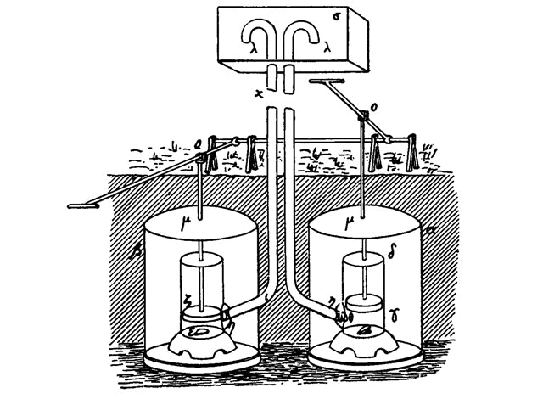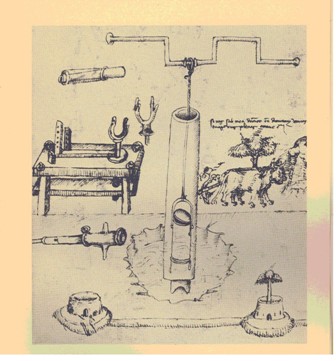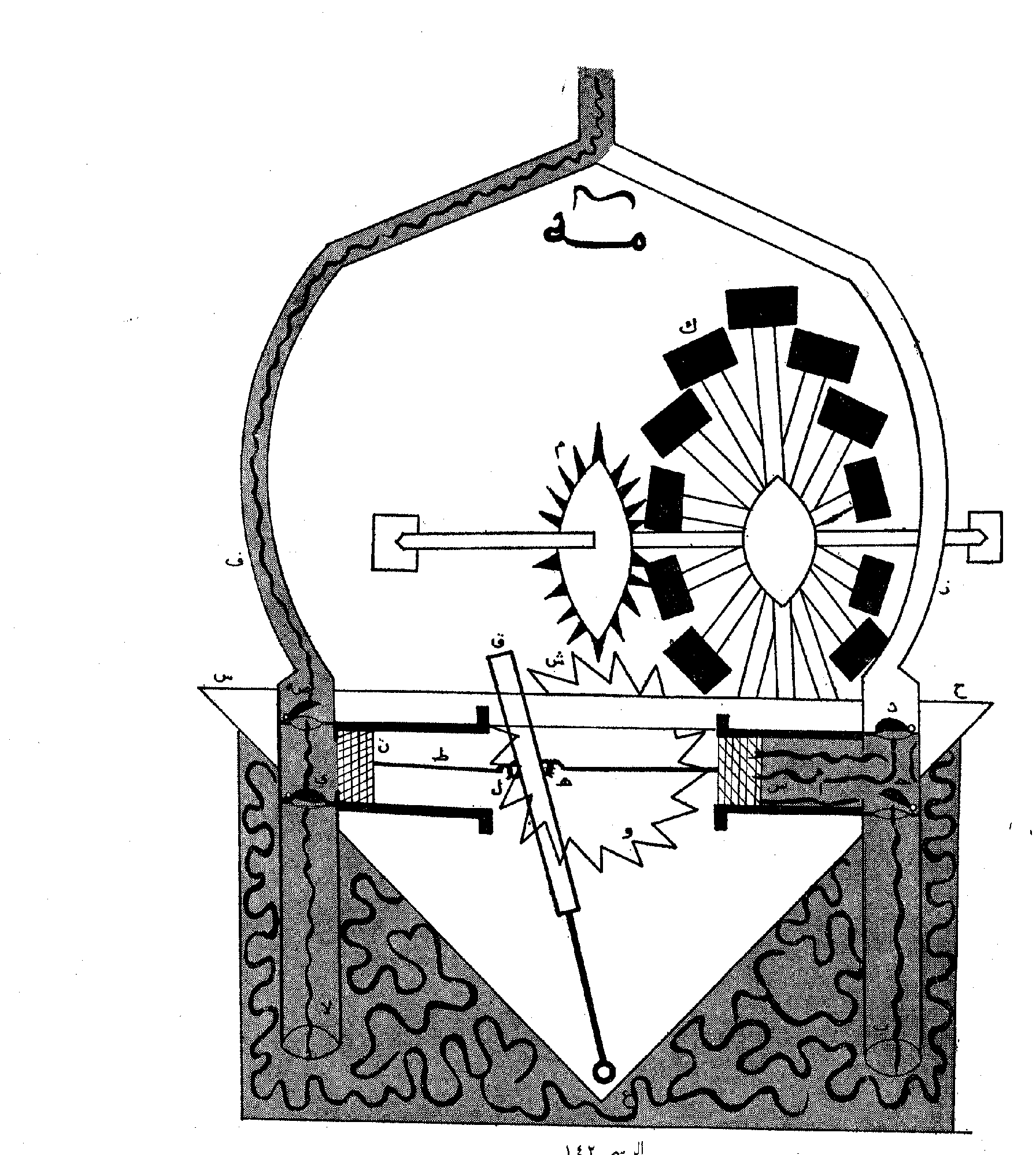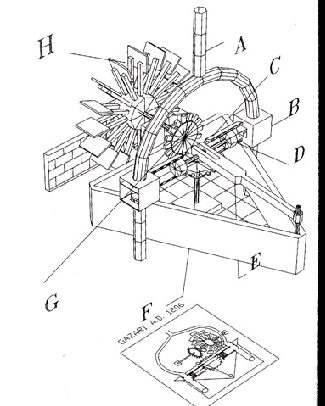
History of Science and Technology in Islam
Brief Notes on Critical Issues
The Origin of the Suction Pump
Al-Jazari 1206 A.D.
The piston pump of Ctesibius (an engineer from Alexandria, Egypt, 3rd
century BC) was described by Philo of Byzantium (2nd century BC) because
Ctesibius’ book was lost. It was a force pump and was submerged in
water; (Fig. 1)[1].

It has the advantage that it will lift water to any height consistent
with the pump and the delivery pipe being able to withstand the
hydrostatic pressure. But it has significant drawbacks. Firstly, the
pumping mechanism is submerged in water; and secondly, if the
water-level falls, the cylinder will not fill. The solution to these
problems is in the use of a suction pipe on the inlet to the pump. Not
only does the suction pipe allow the pump to be set above the water, it
will also accommodate changes in the water's level. In theory the
suction stage can be about 10 meters (33 feet), the height to which
atmospheric pressure will support a column of water, but in practice
more than 7.62 meters (25 feet) is almost impossible to realize.
The European piston pump that made its first appearance in the
fifteenth-century in the writings of Taccola (c. 1450) and Martini (c.
1475) had a suction pipe incorporated into it[2].
Fig 2. shows an underdeveloped design with a crude construction.

The cylinder and piston are made from wood that does not sustain
pressure, and there is no delivery pipe. Water discharges at the outlet
of the pump. Instead of a connecting rod the illustration shows a rope[3].

There is no proof, however, of a European tradition in piston pumps in
the Middle Ages that could have resulted in the development of the
suction pump.
The assumption that Taccola (c. 1450) was the first to describe a
suction pump[4] is not substantiated. The only
explanation for the sudden appearance of the suction pump in the
writings of the Renaissance engineers in Europe is that the idea was
inherited from Islam whose engineers were familiar with piston pumps for
a long time throughout the Middle Ages[5].
Al-Jazari wrote his book on machines in 1206. Among his water raising
machines he described a two cylinder suction piston pump which can be
said that it had a direct significance in the development of modern
engineering. This pump is driven by a water-wheel, which drives, through
a system of gears, an oscillating slot-rod to which the rods of two
pistons are attached. The pistons work in horizontally opposed
cylinders, each provided with valve-operated suction and delivery pipes.
The delivery pipes are joined above the centre of the machine to form a
single outlet into the irrigation system. (Fig. 3)[6]
and Fig.4)[7]

This pump is remarkable for three reasons: a) the earliest known use of
true suction pipe in a pump, b) the application of the double-acting
principle, and c) the conversion of rotary to reciprocating motion. It
therefore has an important place in the development of the steam engine
and .of modern reciprocating pumps[8].
[1] Usher, Abbott, Payson, A History of Mechanical
Inventions, Harvard University Press, 1970. p135
[2] White Jr., Lynn, Medieval Technology and Social
Change, Oxford University Press, 1979, Fig. 7
[3] Prager, Frank D. and Gustino Scaglia, Mariano
Taccola and his Book De Ingeneis, MIT Press, 1972, p. 44, plate 15, pp.
49-51, plate 25
[4] Shapiro, S, ‘ The Origin of the Suction Pump’ in
Technology and Culture, Vol. V, No. 4, pp.566-74
[5] Smith, Norman, Man and Water, London, 1975,
pp.98-99
[6] Al-Jazari, Al- Jami` bayn al-ilm was `amal al-nafi`
fi sina`at al-hiyal ( A Compendium on the Theory and Practice of the
Mechanical Arts), Arabic text, edited by Ahmad Y. al-Hassan, Institute
for the History of Arabic Science, University of Aleppo, 1979, p. 465
[7] Hill, Donald R., Islamic Science and Engineering,
Edinburgh University Press, p.102
[8] Hill, Donald R., Studies in Medieval Islamic
Technology, edited by David King, Ashgate, U.K., 1998, Article II, p.
229. (this paper is a reprint from the Proceedings of the First
International Symposium for the History of Arabic Science, Aleppo, April
5-12 1976, Aleppo, Institute for the History of Arabic Science, 1979.)
Copyright Information
All Articles and Brief Notes are written by Ahmad Y. al-Hassan unless where indicated otherwise.
The design of this website does not belong to Ahmad Y. al-Hassan, the design was based on common webdesign elements.
All published material are the copyright of the author (unless stated otherwise) and may not be published or reproduced in part or in whole without the express written permission of the author.